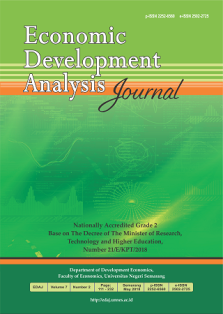Map Distribution of Factors Affecting Stunting in East Nusa Tenggara
Abstract
Stunting is chronic malnutrition in children under five years of age, which results in disturbances in the growth and development of children. Several factors, such as economic, health, and environmental factors, can influence stunting. In this study, a distribution map of the factors influencing stunting in East Nusa Tenggara districts/cities will be formed using Geographically Weighted Regression with a Spatial Lag of X. The variables used are the percentage of infants under two years who are breastfed, the percentage of toddlers who receive complete immunization, the percentage of households that do not use defecation facilities, the percentage of mothers who do not attend formal education, the GRDP growth rate, actual expenditure per capita, and the newly formed variable, namely GRDP growth rate around the i-th observation locations. From the results, it can be concluded that the western part of East Nusa Tenggara has unaffected economic factors, and the eastern part is an area where almost all variables are influential. Only the percentage of mothers who do not attend formal education has no effect, and the northern part is an area with economic factors which has an effect. The southern part is an area with child health factors that have no effect


